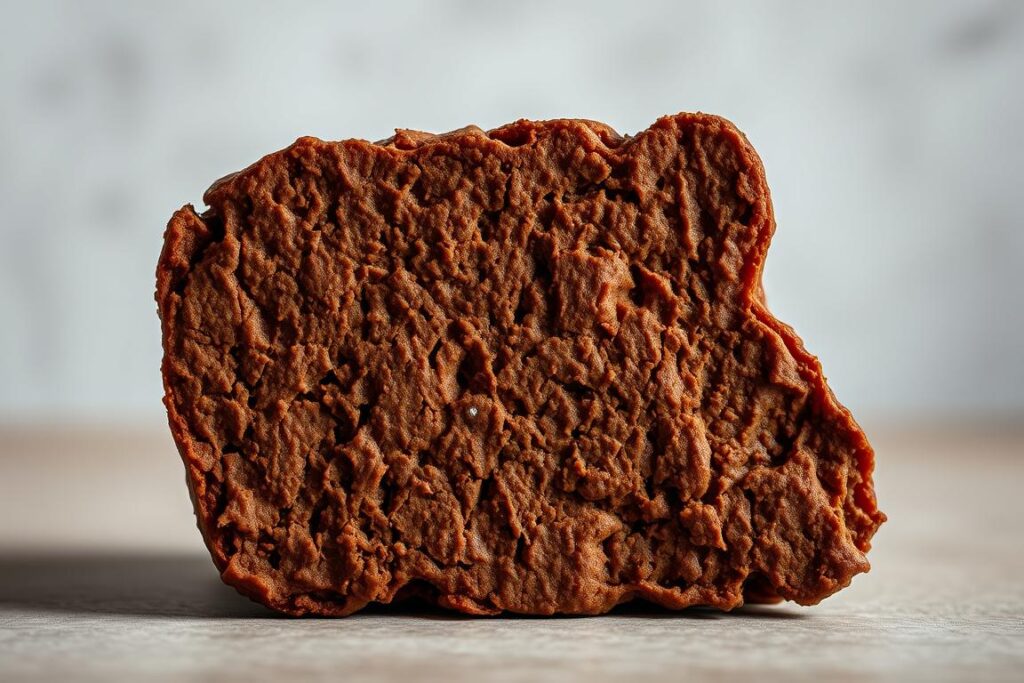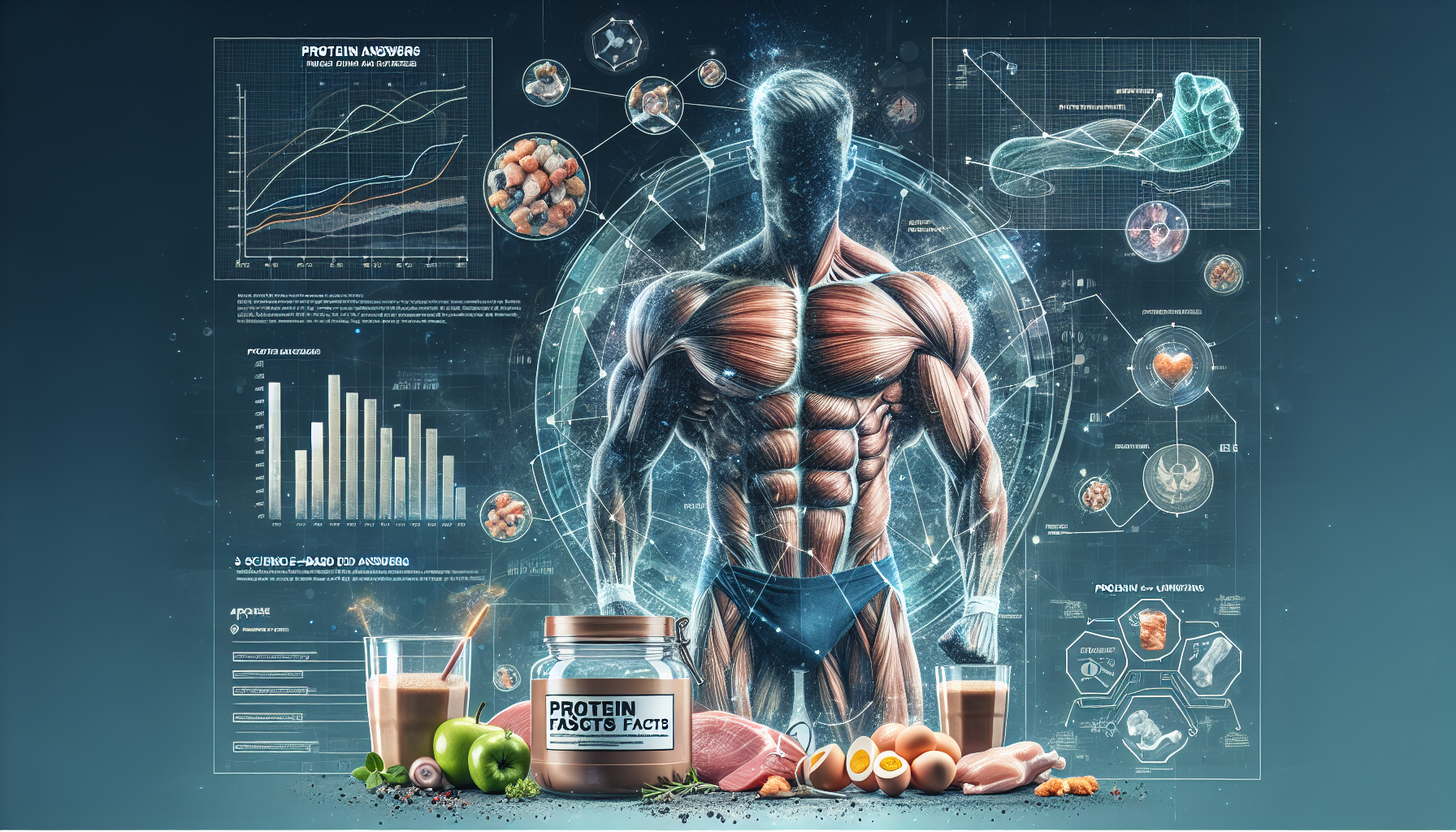Plant-Powered Protein Alternatives for Meatless Muscle was originally published on October 27, 2025 on mindtomusclefitness.com
You want muscle without meat, and you can get there with smart plant choices that actually taste good. Short, practical swaps—like tofu, lentils, seitan, and hemp seeds—give you real grams per serving and support strength, recovery, and overall health.
What should you prioritize? Focus on minimally processed foods that deliver steady fuel across the day: legumes at lunch, fortified soy at breakfast, and higher-protein grains or mycoprotein at dinner. Research shows higher-protein eating patterns link to better strength and satiety, so spread intake to boost muscle synthesis.
Quick promise: with a clear plan and the right sources, your meatless diet can meet nutrient needs and support performance. Watch for fortification, iodine and B12, and combine foods to cover amino acids without fuss.
Key Takeaways
- Choose varied plant sources—legumes, soy, seitan, seeds—to hit daily targets.
- Spread protein across meals to aid muscle building and recovery.
- Favor minimally processed foods and check fortification for nutrients like B12.
- Simple swaps and combos can improve amino acid balance and satiety.
- Research links higher-protein patterns to better strength and weight outcomes.
Why protein quality and quantity matter on a plant-based diet
To build and keep muscle without animal foods, you need to focus on both the makeup and the total of your daily protein. That means thinking about which amino acids you get and how much you eat across the day.
Essential amino acids explained in plain English
There are 20 amino acids. Nine are essential, so you must get them from food. These are the building blocks your body uses to repair and grow muscle.
Soy, quinoa, and amaranth count as complete sources. Other plants can be paired across meals to cover every need.
How higher-protein diets support muscle, fullness, and weight
Quality matters because muscles need the right amino acids after training. Quantity matters because total intake affects strength, recovery, and how full you feel.
- Mix legumes, grains, nuts, and seeds over the day to hit amino acid needs.
- Spread solid servings at each meal to boost muscle synthesis and satiety.
- Research links higher intakes to better muscle outcomes and improved body weight control.
The soy trifecta: tofu, tempeh, and edamame that actually build muscle
Want a simple way to build muscle from soy foods you already know? These three staples give you complete amino acids and easy meal wins.
Protein per serving and nutrient wins
Quick fact: tofu, tempeh, and edamame deliver roughly 12–20 g per 100 g. They also add iron, calcium, and B vitamins.
Choosing and cooking
Silken tofu is creamy—best in smoothies and desserts. Firm or extra-firm holds up for grilling, baking, and crisp pan-searing.
Tempeh is hearty and fermented. Marinate, roast, or pan-sear for a nutty chew and probiotic perks.
Edamame is fast. Steam or microwave, salt lightly, and toss into bowls or salads for fiber and folate.
Smart swaps for classic dishes
- Crumble tempeh for taco “meat.”
- Press and sear tofu for fajitas or stir-fries.
- Add shelled edamame to rice bowls and salads for a quick boost.
| Food | Protein per 100g | Top benefits | Best uses |
|---|---|---|---|
| Tofu | 12–20 g | Calcium, versatile texture | Stir-fries, sandwiches, smoothies |
| Tempeh | 15–20 g | Fermented, minerals, chewy bite | Roasts, tacos, marinated slices |
| Edamame | 12–14 g | Fiber, folate, vitamin K | Snacks, bowls, hummus |
Legumes that pull their weight: lentils, chickpeas, and a variety of beans
Looking for reliable, shelf-stable sources of plant fuel? Turn to lentils, chickpeas, and beans. They cost little and stretch meals without fuss.
Protein per cup and fiber benefits for gut and heart health
Lentils deliver about 18 g per cooked cup. Most beans average near 15 g per cup. That adds real muscle-building value to a simple bowl.
Fiber is the bonus. It feeds gut bacteria and helps cholesterol, blood sugar, and blood pressure—small changes that support long-term health.
Flavor templates: chili, curries, soups, and bowls
Want fast ideas? Make chili with black beans and tomatoes. Try coconut chickpea curry or a lemony lentil soup. Build bowls: grain + legumes + crunchy veg + creamy dressing.
Budget-friendly, shelf-stable options and time-saving tips
- Use canned beans and lentils—rinse to cut sodium and you’re ready in minutes.
- Batch-cook dry lentils; freeze portions for quick meals later.
- Keep chickpeas, black beans, and red lentils in the pantry for reliable, low-cost meals.
| Legume | Protein per cup | Top uses | Quick tip |
|---|---|---|---|
| Lentils | ~18 g | Soups, dahl, bowls | Simmer fast; freeze cooked portions |
| Chickpeas | ~15 g | Curries, hummus, salads | Roast for crispy snacks |
| Mixed beans | ~15 g | Chili, tacos, stews | Use canned and rinse well |
Seitan for the chewy, meat-like bite
Craving a chewy, savory bite that behaves like meat? Seitan delivers. It offers a firm, sliceable texture that stands in for many traditional dishes.
Seitan is made from vital wheat gluten and gives about 25 g per 100 g. It absorbs marinades well and browns nicely when pan-seared.
- Use it in stir-fries, fajitas, BBQ sandwiches, or thin slices for soups.
- Pan-sear to build a crust, then simmer briefly in sauce for juiciness.
- For meal prep, slice, marinate overnight, and cook in batches.
- Choose minimally seasoned products and add your own flavors to keep sodium low.
Who should skip it: gluten-related disorders
Important: seitan is pure gluten. If your body reacts to gluten or you have celiac disease, avoid it.
If you need gluten-free options, try tofu, tempeh, or beans for similar protein and texture benefits.
| Feature | Protein per 100g | Texture | Best uses |
|---|---|---|---|
| Seitan | ~25 g | Chewy, meat-like | Stir-fries, sandwiches, soups |
| Tofu (swap) | 12–20 g | Soft to firm | Bowls, grills, smoothies |
| Tempeh (swap) | 15–20 g | Firm, nutty | Roasts, tacos, marinated slices |
Seeds with serious stats: hemp, chia, and pumpkin
Seeds earn a regular spot in your rotation because they’re compact, nutrient-dense, and easy to use.
Why these seeds matter for everyday meals
Hemp seeds are a complete source with a good omega-3 to omega-6 ratio. You get about 9 g protein per 3 tablespoons. Sprinkle them on oats or salads for a quick boost.
Fiber and texture that fill you up
Chia offers roughly 5 g protein and 10 g fiber per ounce. Stir into yogurt, soak in milk, or blend into smoothies to add thickness and satiety.
Crunch, spread, and rotate
Pumpkin seeds deliver about 24 g protein per 100 g. Roast them as a topper or pulse into a pesto. You can also make pump kin seed butter for toast or smoothies.
- Start with 1–2 tablespoons per meal to add amino support and minerals.
- Keep a jar at work for easy on-the-go boosts.
- Rotate hemp, chia, and pumpkin through the week to diversify nutrients and taste.
| Seed | Protein per serving | Top uses | Key perks |
|---|---|---|---|
| Hemp seeds | ~9 g per 3 tbsp | Sprinkle, blend, stir-in | Complete source; balanced omegas |
| Chia seeds | ~5 g per oz | Soak, blend, mix into oats | High fiber; thickens drinks |
| Pumpkin seeds | ~24 g per 100 g | Roast, topper, make butter | Minerals like magnesium and zinc |
Grains and pseudocereals that do more: quinoa, amaranth, spelt, teff, and wild rice
Not all grains are created equal—some give near-complete amino profiles and useful minerals. Want easy swaps to lift meals and recovery?
Complete vs complementary in plain language
Quinoa and amaranth are rare among grains: they are complete proteins. That means they supply all essential amino acids in one cup.
Other grains pair well with legumes. That creates complementary proteins that cover missing amino acids across a meal.
- Quinoa + black beans = hearty bowl and balanced amino acids.
- Teff + lentils = porridge or stew with extra iron and fiber.
- Wild rice + edamame = texture, bran nutrients, and more plant-based muscle support.
Ancient grains like spelt and teff add minerals, fiber, and a fuller mouthfeel. Batch-cook a few cups on Sunday for bowls, soups, and stuffed peppers. Swap quinoa for pasta to raise fiber and protein quickly.
| Grain | Protein per cooked cup | Key perks | Notes |
|---|---|---|---|
| Quinoa | 8–9 g | Complete amino profile, versatile | Great in bowls and salads |
| Amaranth | 8–9 g | Complete, nutty flavor | Use in porridges and pilafs |
| Spelt | 10–11 g | Minerals, nutty bite | Contains gluten; good in breads |
| Teff | 10–11 g | Iron, gluten-free | Great for porridge and baking |
| Wild rice | ~7 g | Bran retains fiber and minerals | Nice texture for bowls |
Everyday staples: oats and Ezekiel-style sprouted breads
Start your day with staples that are fast, filling, and built to support strength goals. These choices let you hit nutrients without complicated prep.
Oat upgrades: boosting protein with seeds and nut butter
Rolled oats deliver about 11 g per cooked cup and bring fiber and beta-glucan for heart and gut support.
Want more staying power? Stir in hemp or chia seeds and a tablespoon of almond or peanut butter. Overnight oats travel well; add soy yogurt or soy milk for a larger punch.
Prefer savory? Mix in tofu crumbles, spinach, and nutritional yeast for a quick, high-proteins breakfast that keeps you full.
Why sprouting lifts amino acid availability (hello, lysine)
Two slices of Ezekiel-style sprouted bread give roughly 8 g of protein and more usable amino acids. Sprouting breaks down antinutrients and raises lysine, an essential amino that often limits grain-based meals.
Toast it, top with hummus and pumpkin seeds, or build a sandwich to get more protein and fiber than standard loaves.
- Daily win: Make oats your default base and rotate toppings.
- Mix textures: crunchy seeds + creamy nut butter = longer fullness.
- Simple swap: use sprouted bread for sandwiches to boost nutrient availability in your diet.
| Staple | Protein per serving | Best use |
|---|---|---|
| Rolled oats (cooked) | ~11 g per cup | Sweet or savory bowls, overnight oats |
| Ezekiel-style sprouted bread | ~8 g (2 slices) | Toasts, sandwiches, quick post-workout snack |
| Hemp / chia seeds | Added 2–9 g (depending on amount) | Sprinkle, blend, or mix into oats |
Dairy-free protein pours: soy milk and soy-based yogurt
If you want a dairy-style pour that helps hit daily protein goals, soy milk is a top choice. It gives about 6 g protein per cup and often comes fortified with calcium, vitamin D, and B12 for bone and metabolic health.
How do you pick the best product? Read labels. Look for the word fortified and check grams of sugar. Unsweetened versions keep your smoothies, cereal, and baking under control.
Quick, practical picks and uses
- Choose soy milk when you want dairy-like texture and reliable protein for shakes and coffee.
- Use barista-style unsweetened soy for lattes and shakes—better foam and mouthfeel.
- Swap soy milk 1:1 in baking to keep batters tender without extra sugar.
- Soy-based yogurts make fast breakfasts; add nuts, granola, or seeds for crunch and more protein.
| Item | Protein per cup | Best use |
|---|---|---|
| Soy milk (unsweetened) | ~6 g | Smoothies, coffee, baking |
| Soy-based yogurt | Varies by product (check label) | Snacks, bowls, parfaits |
| Barista-style soy | ~6 g | Lattes, shakes, frothy drinks |
Want a quick next step? Keep an unsweetened carton at work for instant coffee upgrades and oatmeal boosts. For meal planning tips that pair well with soy-rich meals, see this vegan bodybuilding meal plan.
Green peas, nutrient-dense veggies, and mycoprotein as stealth proteins
Little green peas quietly add real muscle fuel to bowls and soups. They deliver about 9 g protein per cooked cup—slightly more than a cup of dairy milk. That makes peas a fast, affordable upgrade.
Peas, veggies, and quick wins
Toss frozen peas into pasta, risotto, or soups for a vitamin C and K boost. Other veggies—broccoli, spinach, and Brussels sprouts—also add meaningful grams when you eat a full cup cooked.
When mycoprotein fits and label checks
Mycoprotein products typically offer about 15–16 g per 100 g plus 5–8 g fiber. They give a meat-like texture without meat, so they work well in stir-fries and wraps.
- Compare ingredient lists—some include egg whites that won’t fit a vegan plan.
- Adverse reactions are rare, but start small if you’re new to these foods.
- Choose minimally processed options most of the time to support long-term health.
| Source | Protein per serving | Best use |
|---|---|---|
| Green peas (cooked) | ~9 g per cup | Bowls, soups, pasta |
| Mycoprotein | 15–16 g per 100 g | Stir-fries, wraps, meat-like dishes |
| Other veggies | 3–6 g per cooked cup | Side dishes, mixed bowls |
Plant-powered protein alternatives for active days
Want a no-fuss way to hit daily targets? Build each meal from a clear protein anchor, colorful produce, whole grains, and a healthy fat. This lets you mix meals across the day and keep interest high.
Breakfast to dinner: simple meal frameworks that hit protein targets
Breakfast: tofu scramble with veggies and sprouted toast, or oatmeal with hemp seeds and peanut butter for staying power.
Lunch: quinoa bowl with edamame, black beans, crunchy slaw, and tahini-lime dressing.
Dinner: seitan stir-fry with broccoli and brown rice, or lentil chili over baked sweet potato.
Snack pairings that stack protein, fiber, and healthy fats
- Edamame with sea salt — fast and savory.
- Soy yogurt topped with granola and pumpkin seeds for crunch and seeds.
- Hummus with whole-grain crackers or apple slices and a smear of nut butter.
- Smoothie: soy milk, silken tofu, berries, and chia — quick recovery fuel.
Action steps: rotate your core sources each day, keep a one-hour prep block to cook lentils and press tofu, and use bold sauces (ginger-soy, chipotle-lime) to refresh the same template.
| Meal | Core source | Fast add-ins | Time to make |
|---|---|---|---|
| Breakfast | Tofu or oats + seeds | Sprouted toast, peanut butter | 5–10 min (scramble) / overnight (oats) |
| Lunch | Quinoa + beans/edamame | Slaw, tahini, lemon | 10–15 min (assemble) |
| Dinner | Seitan or lentils | Broccoli, brown rice, bold sauce | 15–25 min (stir-fry or chili) |
| Snacks | Edamame, soy yogurt | Pumpkin seeds, granola | 2–5 min |
How much protein per day: set targets by body weight and goals
Start with a simple formula: grams per kilogram of body weight gives you a clear daily target. This makes it easy to plan meals and track progress.
Baseline math
Healthy adults: aim for about 0.8 g per kg of body weight per day.
So a 150 lb (68 kg) person needs roughly 55 g per day at baseline.
When to aim higher
If you train hard or chase body recomposition, target 1.2–1.6 g/kg. Research supports this range for strength and fat-loss goals.
That same 150 lb person would aim for about 82–109 g per day.
Spread it across the day
Split your target evenly across 3–5 meals and snacks. Anchor each eating occasion with a solid serving, then add grains, veg, and fats.
Mix complete sources and complementary foods to cover essential amino acids without stress.
| Goal | Formula | 150 lb example | Meal plan tip |
|---|---|---|---|
| Baseline | 0.8 g/kg per day | ~55 g per day | ~18 g per meal (3 meals) |
| Active / recomposition | 1.2–1.6 g/kg per day | ~82–109 g per day | ~25–36 g per meal (3 meals) or smaller splits over 4–5 |
| How to adjust | Change with training and weight | Increase with volume; lower when recovery drops | Reassess monthly and tweak targets |
Quick steps: set your daily goal, divide it across the day, and build meals around that anchor. Use research as a guide, then personalize based on how your body responds and your weight goals.
Conclusion
Lean on variety and repeatable patterns: simple, repeatable meals help plants cover grams and amino needs without stress.
You can build muscle and support health by choosing higher-protein plant foods and planning your day around them. Pick a clear protein source at each meal—tofu, tempeh, lentils, beans, or seitan—and add grains like quinoa or oats for balance.
Rotate seeds and legumes for minerals and steady fuel. Check labels for fortification and allergens so your diet matches your goals. Adjust portions to your weight and training, then repeat the frameworks that fit your schedule.
Bottom line: use variety, keep it practical, and trust the process. Choose favorites and put them to work.
FAQ
What counts as a complete plant-based source of essential amino acids?
A complete source provides all nine essential amino acids your body cannot make. Soy (tofu, tempeh, edamame), quinoa, amaranth, and hemp seeds are naturally complete. You can also pair complementary foods—grains with legumes—to form a complete profile over the day.
How much protein do I need per day based on body weight?
For most adults, a baseline is about 0.8 g per kg of body weight. If you train regularly or want to change body composition, aim for 1.2–1.6 g/kg. Spread intake across meals to support muscle repair and synthesis.
Can you get enough protein on a plant-based diet without supplements?
Yes. Focus on a variety of legumes, soy foods, seitan (if you tolerate gluten), grains like quinoa, seeds such as hemp and pumpkin, and fortified soy milk or yogurt. Combining these across meals hits targets reliably.
Which soy foods deliver the most protein per serving?
Firm tofu and tempeh are top choices. Tempeh generally offers about 15–20 g per 3–4 oz serving. Firm tofu provides roughly 8–10 g per 3 oz. Edamame gives around 8–11 g per half-cup shelled serving.
What are smart swaps for classic meat dishes?
Swap ground beef for tempeh or lentils in tacos and chili. Use seitan or extra-firm tofu in stir-fries and sandwiches. For burgers, combine beans, oats, and seeds for texture and added amino acids.
How much protein is in common legumes like lentils and chickpeas?
Cooked lentils deliver about 9 g per half-cup. Chickpeas provide roughly 7–8 g per half-cup. Beans vary—black or navy beans are around 7–8 g. They also add fiber and micronutrients for heart and gut health.
Is seitan a good choice for meat-like texture and protein density?
Yes. Seitan, made from vital wheat gluten, offers high protein per serving and a chewy, meat-like bite. Avoid it if you have celiac disease or non-celiac gluten sensitivity.
How do seeds like hemp, chia, and pumpkin support protein goals?
Hemp seeds are notable for being a complete protein and providing omega-3 and omega-6 fats. Chia adds a fiber-protein combo and gels well in puddings. Pumpkin seeds make a crunchy topper or butter for salads and bowls.
Which grains are complete proteins and how do I pair others?
Quinoa and amaranth are complete among grains. Other grains (oats, spelt, teff, wild rice) pair well with legumes or seeds to balance amino acids—think rice and beans or oats with peanut butter and hemp.
Are sprouted breads and oats better for amino acid availability?
Sprouting improves digestibility and can increase availability of certain amino acids like lysine. Upgrading oats with seeds, nut butter, or soy milk raises the meal’s total protein and quality.
What should I look for in dairy-free milks and yogurts?
Choose fortified soy milk or soy yogurt for the highest protein per cup—often 7–10 g. Check labels for calcium, vitamin B12, and vitamin D fortification. Favor unsweetened versions for smoothies and baking.
Can green peas and mycoprotein be reliable stealth protein sources?
Yes. Green peas offer notable protein and micronutrients compared with many vegetables. Mycoprotein products (e.g., Quorn) can be protein-dense; read labels for fiber, fat, and sodium levels before buying.
How do I structure meals across an active day to hit protein targets?
Aim for protein at each meal: breakfast with oats + seeds or soy yogurt; lunch with legumes or tempeh bowls; dinner with seitan, tofu, or a grain-legume combo. Add high-protein snacks like pumpkin seeds or edamame.
Are fortified soy products necessary for micronutrients?
They help. Fortified soy milk often contains calcium, vitamin D, and B12, which are useful on a plant-forward diet. If you avoid animal products, prioritize fortified options or discuss supplements with a clinician.
What are budget-friendly, shelf-stable protein options?
Dry lentils, canned beans, chickpeas, and canned or frozen edamame are affordable and shelf-stable. Oats, canned pumpkin seeds, and vital wheat gluten (for seitan) also store well and save time.







Log in to leave a comment!
Create an Account Login